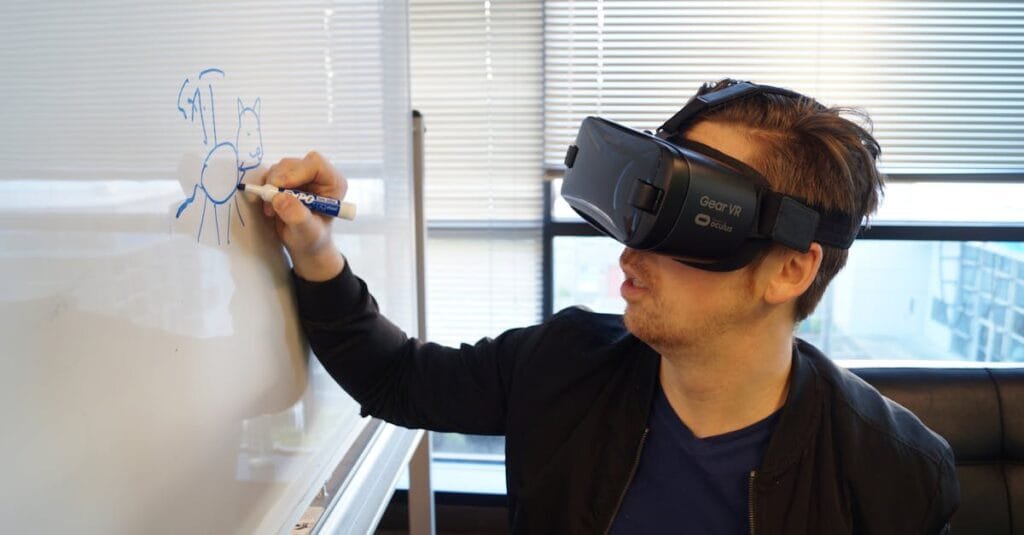Have you ever wondered how some organizations seem to transform training into an engaging, efficient, and impactful process while others are stuck in the rut of traditional methods? I get it; many of us are familiar with the monotonous cycle of training sessions that feel more like a chore than a worthwhile investment. The challenge is how to break away from that routine.
So, why is the conversation around XR (Extended Reality) solutions becoming so vital in the realm of shared services? Here’s the deal: as shared services evolve, the way we train team members needs to keep pace. That’s where XR enters the stage. It’s becoming a game changer in enhancing training effectiveness and retaining knowledge.
What Are XR Solutions?
Let’s break it down. XR is an umbrella term that covers Virtual Reality (VR), Augmented Reality (AR), and Mixed Reality (MR). Each technology provides a unique approach to how we perceive and interact with digital environments.
- Virtual Reality (VR) immerses users in a completely virtual space.
- Augmented Reality (AR) overlays virtual elements onto the real world.
- Mixed Reality (MR) blends both, allowing real and virtual elements to interact.
When used effectively, XR solutions can revolutionize the way organizations approach training. Imagine a new associate walking through a virtual model of their entire workflow or utilizing AR to understand complex financial processes right at their workstation.
The Advantages of XR in Training
It’s not just about using cool tech for the sake of it. There are real benefits here:
- Immersive Experience: XR engages users more than traditional methods ever could. You remember those boring manuals, right? XR turns that into an experience.
- Retention of Information: Studies show that people retain information better when they engage with it actively. With XR, team members are not just observers; they are participants.
- Flexibility: You can train anyone, anywhere. Need to onboard someone in a different location? No problem—send them a VR headset or work with AR on their mobile device.
- Scalability: One XR training program can be used for hundreds of associates, reducing redundancy while enhancing the learning curve across the board.
Bringing XR into Shared Services Training
If you’re thinking about incorporating XR solutions into your training, here’s a straightforward roadmap to follow:
- Identify Training Objectives: What do you want your team to learn? Be specific.
- Choose the Right Technology: Understand your audience and select whether VR, AR, or MR is best suited for your needs.
- Develop High-Quality Content: It’s not enough to have great tech; the content needs to be engaging and relevant. Make it relatable!
- Integrate With Existing Systems: Ensure that the XR training complements your work processes, especially in shared services where efficiency is king.
- Test and Iterate: Start small, gather feedback, and refine the program before rolling it out company-wide.
Stories from the Field: Real-World Success
Let’s get personal for a second. I was consulting with a large shared services organization that initially faced high training turnover. New hires felt overwhelmed by the traditional training sessions, which drained motivation. We decided to introduce VR modules that simulated real-life scenarios they would encounter daily, from processing invoices to handling customer queries.
The result? A marked improvement in both engagement and knowledge retention. It was incredible to see team members not only grasp concepts quicker but also confidently apply them! This is the power of XR solution-driven training.
Overcoming Resistance
Let’s face it: any change can meet resistance. Some individuals might be hesitant about XR because it’s unfamiliar or intimidating. Here’s how to tackle this:
- Educate: Inform your team members about the benefits of XR and how it enhances their learning experience.
- Start Small: Roll out pilot programs that allow them to dip their toes into XR without overwhelming them.
- Gather Testimonials: Share positive experiences from those who have embraced XR—that peer influence is powerful.
Balancing Technology and Human Interaction
I know, it might seem like XR can replace human interaction entirely, but that’s not the case. The sweet spot is knowing when to incorporate the tech and when to lean on traditional methods. Training isn’t just about process optimization; it’s about building a work culture, fostering relationships, and creating a sense of community.
You want your associates to feel supported, to know they can depend on their teammates just as much as they can rely on XR technology.
Conclusion: The Future of Training in Shared Services
Bringing XR solutions into the fold is not just a trend; it’s an essential step towards transforming training in shared services.
It’s about creating a more impactful, memorable learning experience that sticks. Honestly, isn’t that what we all really want? It’s not just about the numbers; it’s about the people behind those numbers.
As we continue to push the envelope in shared services transformation, let’s not forget to embrace innovation that truly uplifts our people and processes. For ongoing insights, stories, and best practices, check out THEGBSEDGE.


